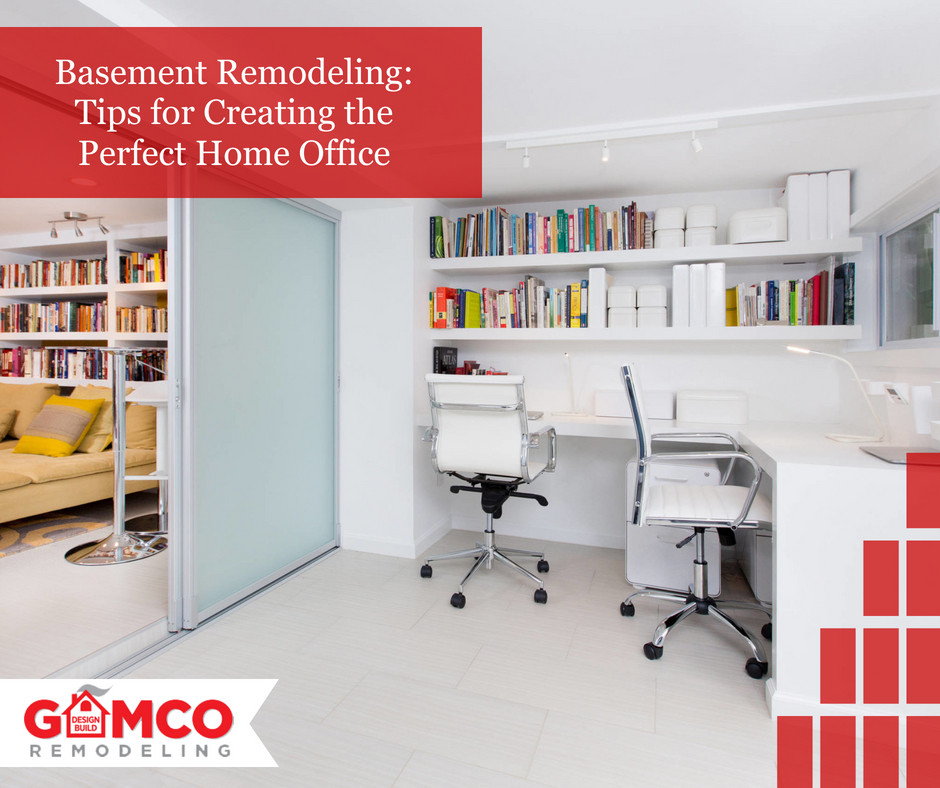
The modern workforce has witnessed a significant shift towards remote work, leading to a growing trend of home offices. Among the various options for setting up a home office, utilizing the basement space offers unique advantages. In this article, we will explore tips and considerations for creating the perfect home office in your basement, ensuring a productive and comfortable work environment.
Assessing Your Basement Space
When contemplating a basement home office, it is essential to evaluate the suitability of the space. Consider factors such as natural light availability, noise levels, and ventilation. While basements tend to have limited natural light, assess if there are any windows or if additional light sources can be incorporated. Address noise concerns by choosing a location within the basement that is away from high-traffic areas. Additionally, ensure proper ventilation to maintain a fresh and comfortable atmosphere in your office.
Planning and Design
Before diving into the remodeling process, establish your work requirements and needs. Determine the layout and functionality of the office space, considering factors such as desk placement, storage options, and room for movement. Emphasize ergonomic principles by selecting a comfortable chair, an adjustable desk, and proper lighting to reduce strain on your body. Adequate storage solutions, such as shelves and cabinets, will help keep your office organized and clutter-free.
Consider the following aspects to create a functional and inspiring workspace:
- Workflow Optimization: Determine the layout of your office space based on your work requirements and workflow. Position your desk in a way that maximizes natural light and provides a view, if possible. Consider the proximity of storage solutions, such as shelves or cabinets, to keep essential items within reach. Create a designated area for printers, scanners, and other office equipment to streamline your workflow.
- Ergonomic Considerations: Prioritize ergonomics to ensure a comfortable and healthy working environment. Invest in an adjustable ergonomic chair that supports your posture and minimizes the risk of back or neck strain. Select a desk that is at the appropriate height to promote proper typing and writing position. Consider adding a standing desk or ergonomic accessories, such as a monitor stand or keyboard tray, to cater to your individual needs.
- Organization and Storage: A clutter-free workspace enhances productivity and focus. Incorporate sufficient storage solutions to keep your office essentials organized. Utilize shelves, cabinets, or file drawers to store paperwork, office supplies, and reference materials. Consider using labeled bins or baskets to categorize and store smaller items, ensuring easy access and efficient organization.
- Personalization and Inspiration: Infuse your personality into the design of your home office to create a space that inspires and motivates you. Add personal touches such as artwork, photographs, or inspirational quotes that resonate with your professional goals and aspirations. Consider incorporating a vision board or a whiteboard where you can jot down ideas or reminders. Surrounding yourself with items that reflect your passions and aspirations can ignite creativity and boost your overall mood and productivity.
By carefully planning the layout, focusing on ergonomic considerations, incorporating effective organization and storage solutions, and infusing personal touches, you can design a basement home office that not only meets your functional needs but also inspires you to do your best work. Remember, creating a workspace that supports your well-being and reflects your unique style can contribute to a more enjoyable and productive remote work experience.
Lighting and Electrical Considerations
Basements often lack ample natural light, making it crucial to maximize available sources. Place your desk near windows if possible, allowing natural light to brighten your workspace. To supplement natural light, select appropriate artificial lighting options such as LED desk lamps or overhead fixtures. Moreover, ensure sufficient electrical outlets and wiring to accommodate your office equipment and devices, preventing any electrical overload.
Soundproofing and Acoustics
One common challenge in basement home offices is noise interference from activities happening elsewhere in the house. To create a quieter work environment, consider implementing soundproofing techniques. This can include installing acoustic panels on walls or using heavy curtains to absorb sound. Additionally, choose acoustic materials such as carpets or rugs to enhance sound quality within your office, reducing echoes or reverberations.
Temperature and Climate Control
Basements often experience temperature fluctuations due to their underground location. To ensure year-round comfort in your home office, focus on proper insulation and HVAC systems. Insulate walls and ceilings to regulate temperature and minimize the impact of external weather conditions. Consider additional climate control options like space heaters or fans to fine-tune the temperature according to your preferences.
Technology and Connectivity
A reliable internet connection is vital for a functional home office. Ensure your basement has a strong Wi-Fi signal by placing routers strategically or using Wi-Fi extenders if needed. Plan for proper cable management to avoid tangling wires and ensure a neat workspace. Set up your technology equipment, such as computers, printers, and scanners, in a way that promotes efficiency and accessibility.
Aesthetics and Decor
The visual appeal of your home office plays a significant role in productivity and focus. Choose a color scheme that inspires concentration, such as calming blues or energizing greens. Incorporate elements that motivate you, such as artwork or plants, to create a stimulating environment. Select furniture that balances comfort and professionalism, opting for a desk and chair that fit your ergonomic needs while reflecting your personal style.
Safety and Security
Basement home offices should prioritize safety and security measures. Install reliable locks on doors and windows to protect your equipment and confidential information. Consider installing a home security system or alarms to provide an additional layer of protection. Equally important is fire safety. Install smoke detectors and fire extinguishers, and ensure your office space meets all necessary safety regulations.
Conclusion
Remodeling your basement into a perfect home office requires careful planning and consideration. By assessing your basement space, focusing on design, optimizing lighting, addressing soundproofing and acoustics, ensuring temperature control, prioritizing technology and connectivity, creating an appealing aesthetic, and emphasizing safety and security, you can create an ideal workspace tailored to your needs. With a well-designed basement home office, you can enjoy the benefits of a comfortable, productive, and inspiring work environment while working remotely. Embrace the potential of your basement and transform it into a haven for professional success.
For more helpful tips on basement remodeling and utilizing the space within your home, follow the home remodeling experts GAMCO Remodeling or contact us at (631) 587-2266.
